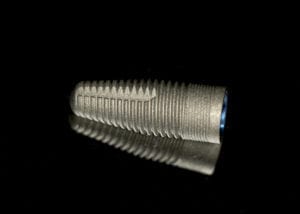 Are you considering dental implants? You might be confused about the range of implants that are available. The right choice of implant for you will depend on the condition of your teeth and the state of the bone in your jaw. Here is your simple guide to the different types of dental implants. Patients should schedule an appointment after reading the guide to discuss their options with our qualified oral surgeons who can provide expert advice.
Are you considering dental implants? You might be confused about the range of implants that are available. The right choice of implant for you will depend on the condition of your teeth and the state of the bone in your jaw. Here is your simple guide to the different types of dental implants. Patients should schedule an appointment after reading the guide to discuss their options with our qualified oral surgeons who can provide expert advice.
Root Form Implants
The most common type of dental implant is a root form implant, which is inserted into the jawbone. The part of the implant left sticking out of the bone is used to provide a support for dental bridges or crowns, which replace missing teeth. Root form implants are usually made of titanium and coated with hydroxylapatite or a titanium plasma spray.
Root form implants are a great option for many patients. However, they may not be suitable for patients whose jawbone has worn away due to advanced periodontal disease or another cause. The jawbone must be strong and stable to support the root form implant. Typically this condition can be addressed with a safe dental bone grafting procedure.
Overwhelmingly, root form dental implants, also known as endosseous (within the bone) implants, are the most likely to be recommended by your oral surgeon. In fact, in this office we see an overall success rate of 98% with root form dental implants. However, even if you don’t have good enough bone stability, there are other types of implants that might be suitable for you.
Here is an excellent illustration of different types of dental implants. Oral surgeons Robert Emery, DDS and James Ryan, DDS will be able to advise you as to which is most appropriate for you.
Subperiosteal Implants
Subperiosteal (on top of the bone) implants are an option for patients who have little bone left to fix an implant to. This type of implant uses a titanium framework, which is surgically fitted over the existing bone. Permanent false teeth can then be fixed to the framework, freeing you from the need to wear dentures. These days, subperiosteal implants are very rare as root form implants have become the preferred option.
Mini-implants
Mini dental implants were developed as a less expensive option compared to standard implants. Thinner by design, these implants have less surface area with which to integrate with the surrounding bone.
Mini-implants are usually placed in a group in order to support an overdenture. Mini-implants can be fitted quickly and easily under local anesthetic. Healing could be quicker for mini-implants than for some of the more extensive types of implants as the surgery is minimally invasive. Unfortunately, there is limited data as to the success rates of mini implants. It would be advisable to consult with us before choosing this surgical option.
Choosing Dental Implants
Having dental implants fitted is a life-changing event for many people. If you struggle with eating, speaking, or lack confidence because of missing teeth, you should book an appointment with our highly qualified surgeons to discuss dental implants. Patients can benefit strongly from the right choice of dental implants, which can be used to replace missing teeth.